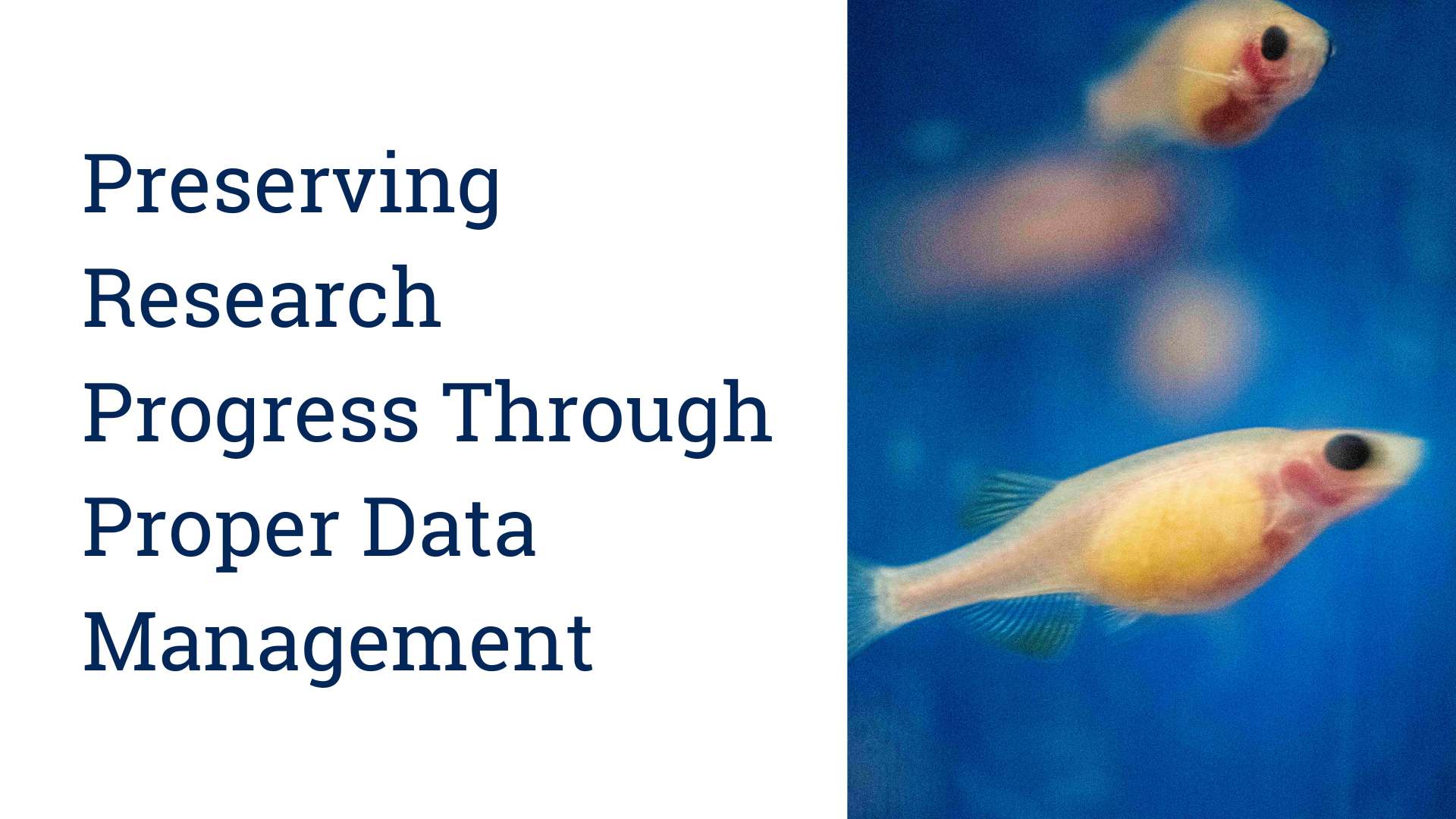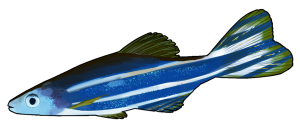
Preserving Research Progress Through Proper Data Management
By Iris May-Fleming, Media Intern
University of Maine (UMaine) researchers are using zebrafish at Pr
ofessor of Biological Sciences Clarissa Henry’s lab to model human muscle development, specifically focusing on muscular dystrophies, a group of diseases characterized by progressive muscle wasting. UMaine’s Zebrafish Facility, part of the Coordinated Operating Research Entities (CORE), hosts up to 40,000 zebrafish for researchers to use. “Fish are a really good model organism for studying muscle development because their muscles are actually pretty structurally similar to human muscles,” explained Claire Schaffer, a lab technician working with Henry. “By studying fish muscles, we gain more insight into how muscles develop and grow, which can be applied to understanding and improving human muscle development.”

One of the most effective ways that researchers have utilized fish in the study of muscular dystrophy is by introducing mutations in their genes that are known to cause the condition in humans. This allows scientists to observe the effects of these mutations on muscle development and function, and to identify potential therapeutic targets. Additionally, fish have been used to test potential drugs for treating muscular dystrophy, allowing researchers to determine the efficacy of these drugs and identify any potential side effects.
This research requires repetitive high-definition microscope images. One of the important aspects of the research is data storage. “We are generating a vast amount of data from microscopy, and it is really essential that we have a robust system to back up all our data,” Schaffer explained. “We had a scare this fall that kicked me into high gear with the importance of backlogging everything. One of the harddrives failed, fortunately we were able to retrieve the data.” Since the scare, Schaffer worked with UMaine’s Advanced Research Computing, Security, and Information Management (ARCSIM) unit to store data with the Ohio Supercomputer Center (OSC). “I’m not always big on coding, so it took me a little bit, but everyone in the process has been great and super helpful, and OSC was really easy to work with.” Schaffer said. Now through OSC, the project’s data can be affordably and securely backed up.
“A significant amount of time, money, and effort goes into research, and that research is supported, documented, and reproduced through data. Backing up data in an additional location offers protection from a single point of failure,” explained Melissa Kimble, ARCSIM’s research data security analyst. “There are few things that are quite as awful as the feeling of losing months (or even years) worth of work. Incorporating a data backup plan into your routine is a simple tactic to mitigate the risk of losing data.”
The research on zebrafish aims to provide a more fundamental understanding of all the different factors that affect people’s muscles. “We get to learn more about all the different little small parts involved in healthy or unhealthy muscle development. On a much smaller scale we get to learn more about the actual pathways that affect this development,” Schaffer explained. By continuing to study muscular dystrophy in fish, researchers hope to identify new treatments and therapies that will improve the lives of those affected by muscular dystrophy, with an eventual effect of helping researchers identify and understand more about human muscle development as a whole.
